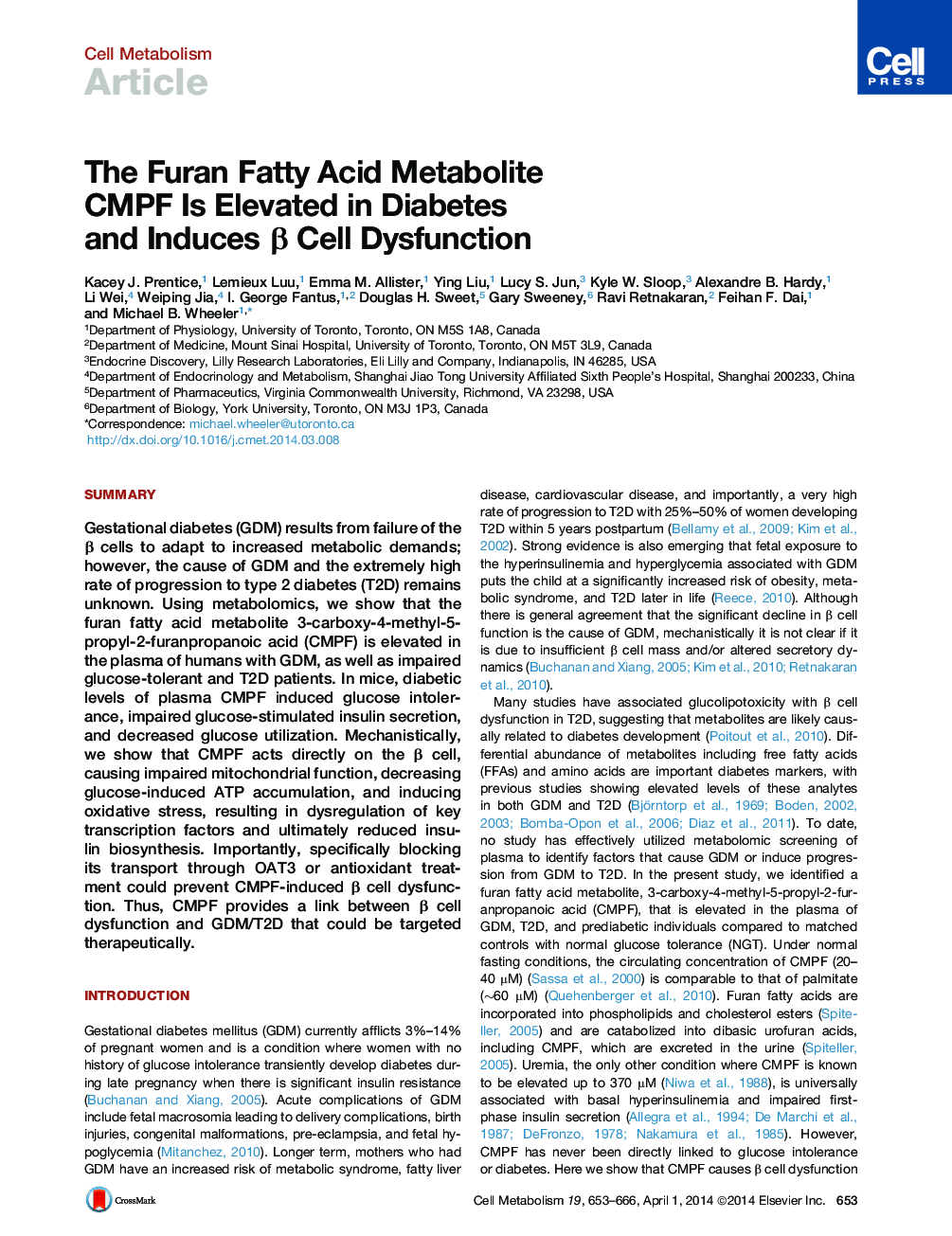| کد مقاله | کد نشریه | سال انتشار | مقاله انگلیسی | نسخه تمام متن |
|---|---|---|---|---|
| 2792667 | 1155075 | 2014 | 14 صفحه PDF | دانلود رایگان |

• Plasma CMPF is elevated in humans with diabetes and impaired glucose tolerance
• CMPF impairs β cell function by inhibiting insulin biosynthesis and secretion
• CMPF enters the β cell through OAT3
• The effect of CMPF can be prevented using antioxidant treatment or OAT3 blockade
SummaryGestational diabetes (GDM) results from failure of the β cells to adapt to increased metabolic demands; however, the cause of GDM and the extremely high rate of progression to type 2 diabetes (T2D) remains unknown. Using metabolomics, we show that the furan fatty acid metabolite 3-carboxy-4-methyl-5-propyl-2-furanpropanoic acid (CMPF) is elevated in the plasma of humans with GDM, as well as impaired glucose-tolerant and T2D patients. In mice, diabetic levels of plasma CMPF induced glucose intolerance, impaired glucose-stimulated insulin secretion, and decreased glucose utilization. Mechanistically, we show that CMPF acts directly on the β cell, causing impaired mitochondrial function, decreasing glucose-induced ATP accumulation, and inducing oxidative stress, resulting in dysregulation of key transcription factors and ultimately reduced insulin biosynthesis. Importantly, specifically blocking its transport through OAT3 or antioxidant treatment could prevent CMPF-induced β cell dysfunction. Thus, CMPF provides a link between β cell dysfunction and GDM/T2D that could be targeted therapeutically.
Graphical AbstractFigure optionsDownload high-quality image (161 K)Download as PowerPoint slide
Journal: - Volume 19, Issue 4, 1 April 2014, Pages 653–666